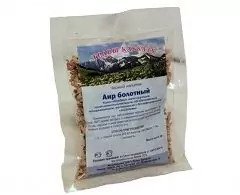Aminoven
Instructions for use:
- 1. Release form and composition
- 2. Indications for use
- 3. Contraindications
- 4. Method of application and dosage
- 5. Side effects
- 6. Special instructions
- 7. Drug interactions
- 8. Analogs
- 9. Terms and conditions of storage
- 10. Terms of dispensing from pharmacies
Prices in online pharmacies:
from 3595 rub.
Buy

Aminoven is a parenteral nutritional medicine used to replenish amino acid deficiencies.
Release form and composition
The dosage form of Aminovena is a solution for infusion 5%, 10% or 15%: slightly opalescent or transparent, slightly yellowish or colorless (in bottles of 500 or 1000 ml, 6 or 10 bottles in a cardboard box).
Active substances in 1 liter of infusion solution (5% / 10% / 15%):
- L-leucine: 3.7 / 7.4 / 8.9 g;
- L-isoleucine: 2.5 / 5 / 5.2 g;
- L-methionine: 2.15 / 4.3 / 3.8 g;
- L-lysine acetate: 4.655 / 9.31 / 15.66 g (corresponds to L-lysine - 3.3 / 6.6 / 11.1 g);
- L-threonine: 2.2 / 4.4 / 8.6 g;
- L-phenylalanine: 2.55 / 5.1 / 5.5 g;
- L-valine: 3.1 / 6.2 / 5.5 g;
- L-tryptophan: 1/2 / 1.6 g;
- L-histidine: 1.5 / 3 / 7.3 g;
- L-arginine: 6/12/20 g;
- L-alanine: 7/14/25 g;
- L-tyrosine: 0.2 / 0.4 / 0.4 g;
- L-serine: 3.25 / 6.5 / 9.6 g;
- L-proline: 5.6 / 11.2 / 17 g;
- Taurine: 0.5 / 1/2 g;
- Glycine: 5.5 / 11 / 18.5 g.
Additional components (5% / 10% / 15%): glacial acetic acid - 2.2-2.8 / 4.7-5.7 / 4.45 g, malic acid - 0/0 / 4.9-6, 1 g, water for injection (for all types of solutions) - up to 1 l.
Indicators (5% / 10% / 15%): total nitrogen - 8.1 / 16.2 / 25.7 g / l, total concentration of amino acids - 50/100/150 g / l, energy value - 840/1580 / 2520 kJ / l (200/400/600 kcal / l), theoretical osmolarity - 495/990/1505 mosmol / l, titratable acidity - 12/22/44 mmol NaOH / l, pH value - 5.5- 6.3 / 5.5-6.3 / 5.5-6.3.
Indications for use
- Parenteral nutrition (full or partial). Aminoven is usually used in combination with a sufficient amount of energy sources (glucose, fat emulsions);
- Loss of proteins when enteral / oral nutrition is not possible, contraindicated or insufficient (treatment and prevention).
Contraindications
- Metabolic acidosis;
- Disruption of amino acid metabolism;
- Renal failure in cases where hemodialysis or hemofiltration is absent;
- Decompensated heart failure;
- Hepatic failure in severe course;
- Liquid overload;
- Hypoxia;
- Shock;
- Age up to 2 years;
- Hypersensitivity to drug components.
For women during pregnancy and lactation, the administration of Aminoven is possible after assessing the ratio of benefits to risks.
Method of administration and dosage
Aminoven is intended for intravenous administration.
5% / 10% solutions are injected into a peripheral or central vein (the choice is determined by the final osmolarity when combined with other solutions); A 15% solution must be injected only into the central veins.
The infusion time depends on the indications and the need for amino acids.
Adults
Average / maximum dose per day:
- 5%: 16-20 ml / kg (800-1000 mg / kg, which corresponds to 1120-1400 ml for patients weighing 70 kg) / 20 ml / kg (1000 mg / kg, which corresponds to 1400 ml for patients weighing 70 kg);
- 10%: 10-20 ml / kg (1000-2000 mg / kg, which corresponds to 700-1400 ml for patients weighing 70 kg) / 20 ml / kg (2000 mg / kg, which corresponds to 1400 ml for patients weighing 70 kg);
- 15%: 6.7-13.3 ml / kg (1000-2000 mg / kg, which corresponds to 470-930 ml for patients weighing 70 kg) / 13.3 ml / kg (2000 mg / kg, which corresponds to 930 ml for patients weighing 70 kg).
Maximum rate of drug administration:
- 5%: 2 ml (100 mg) per kg body weight / h;
- 10%: 1 ml (100 mg) per kg body weight / h;
- 15%: 0.67 ml (100 mg) per kg bw / h.
Children from 2 years of age
Maximum dose per day:
- 5%: 16-20 ml / kg (equivalent to 800-1000 mg / kg);
- 10%: 10-20 ml / kg (equivalent to 1000-2000 mg / kg).
Aminoven 15% should not be used in children under 18 years of age (due to the lack of necessary clinical data confirming the safety and effectiveness of the drug).
The maximum rate of administration of Aminoven for children corresponds to the maximum rate used for adult patients.
Side effects
Adverse reactions with the correct use of Aminovena are unknown.
Violations that develop with an overdose are usually reversible and go away on their own after stopping the administration of the solution.
Any infusion into peripheral veins can lead to the development of irritation of the vessel walls and thrombophlebitis.
special instructions
During the period of therapy, it is necessary to monitor the level of electrolytes, kidney function and fluid balance.
In case of hyponatremia / hypokalemia, a sufficient amount of potassium / sodium should be administered simultaneously.
With the introduction of any solutions of amino acids, the development of an acute deficiency of folates is possible, and therefore, patients need to inject folic acid daily.
In heart failure, the administration of fluids in large volumes must be carried out carefully.
Due to the fact that any infusion into a peripheral vein can lead to irritation of the vessel wall and thrombophlebitis, it is recommended to inspect the place where the catheter is installed daily. If the patient is also prescribed a fat emulsion, in order to reduce the likelihood of developing phlebitis, if possible, it should be administered simultaneously with Aminoven.
The choice of the injection site (placement of a catheter in the peripheral / central vein) is determined by the final osmolarity of the mixture: the osmolarity limit for injection into the peripheral vein is from 800 to 900 mosmol / l. It is also necessary to take into account the patient's age, his clinical condition and the condition of his peripheral veins.
Catheter placement, especially in the central vein, must be performed with strict aseptic guidelines.
The solution should be applied immediately after opening the package. Before the introduction, you must make sure that it is not damaged, Aminoven is transparent and does not contain particles.
Drug interactions
Cases of interaction of Aminovena are currently unknown.
Due to the increased likelihood of microbiological contamination and incompatibility, Aminoven should not be mixed with other drugs that are not used for parenteral nutrition.
Aminoven, subject to strict adherence to aseptic rules, can be mixed with Dipeptiven. Do not add other drugs to the mixture.
Analogs
Aminoven's analogs are: Aminoven Infant, Dipeptiven, Aminoplasmal Hepa, Hymix, Nephrotect.
Terms and conditions of storage
Keep out of reach of children at temperatures up to 25 ° C, do not freeze.
Shelf life is 2 years.
Under sterile conditions, Aminoven can be mixed with other drugs used for parenteral nutrition - fat emulsions, carbohydrates and electrolytes. The prepared mixtures must be used immediately. The storage of the mixture is possible in exceptional cases - up to 24 hours at a temperature of 2-8 ° C.
Terms of dispensing from pharmacies
Released for hospitals.
Aminoven: prices in online pharmacies
|
Drug name Price Pharmacy |
|
Aminoven 10% solution for infusion 500 ml 10 pcs. 3595 RUB Buy |
|
Aminoven 15% solution for infusion 500 ml 10 pcs. RUB 4075 Buy |
|
Aminoven Infant 10% solution for infusion 100 ml 10 pcs. 4299 RUB Buy |
Information about the drug is generalized, provided for informational purposes only and does not replace the official instructions. Self-medication is hazardous to health!







